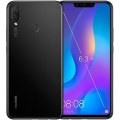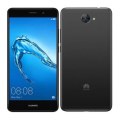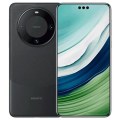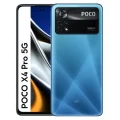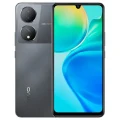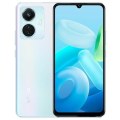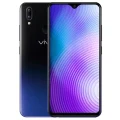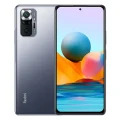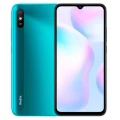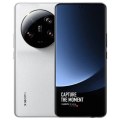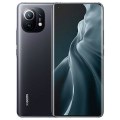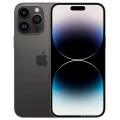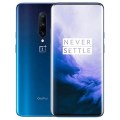- Awesome page
- Latest Mobile
- Smartphones
- Huawei Y7 Prime
Huawei Y7 Prime
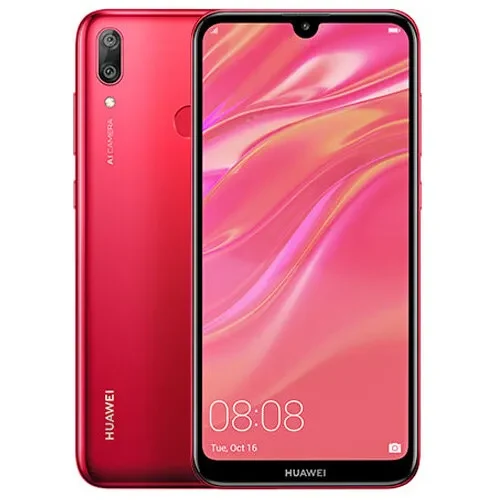


Huawei Y7 Prime Price in Bangladesh
The Huawei Y7 Prime is priced at BDT 17,990 in Bangladesh. It features a 5.5-inch IPS LCD display and is powered by a 1.4 GHz Qualcomm MSM8940 Snapdragon 435 Quad-core processor. This device offers 3GB of RAM and 32GB of internal storage, expandable up to 128GB via external storage. The Huawei Y7 Prime includes a 12 MP rear camera and an 8 MP front camera. It is equipped with a 4000mAh Li-Ion battery, ensuring long-lasting usage.
Specifications
General
| Model | Huawei Y7 Prime |
| Status | Available |
| Official price | 17900 |
Design
| Dimensions | 153.6 x 76.4 x 8.4 mm (6.05 x 3.01 x 0.33 in) |
| Weight | 165 g (5.82 oz) |
| Colors |
Gray, Silver, Prestige Gold, Black, Aurora Blue |
Network
| Technology | GSM / HSPA / LTE |
| 2G Network |
GSM 850 / 900 / 1800 / 1900 - SIM 1 & SIM 2 |
| 3G Network |
HSDPA 850 / 900 / 1900 / 2100 |
| 4G Network |
LTE band 1(2100), 3(1800), 5(850), 7(2600), 8(900), 38(2600), 39(1900), 40(2300), 41(2500) |
| GPRS <strong>GPRS</strong> (General Packet Radio Service) is a packet oriented mobile data service on the 2G and 3G cellular communication system's global system for mobile communications (GSM), Generally, GPRS is used for the purpose of wireless data transfer, such as sharing pictures and videos or browsing the Internet via a mobile phone connection. | |
| EDGE <strong>EDGE</strong> (Enhanced Data GSM Environment) is a wireless network technology generally considered the next step in the 2G network offers data transfer rates up to four times faster than ordinary GSM networks, Generally, EDGE is used for the purpose of wireless data transfer, such as sharing pictures and videos or browsing the Internet via a mobile phone connection. | |
| Speed | HSPA, LTE |
Display
| Display Type <strong>Display Technology => </strong> A number of display technologies and types used in mobile phones => TFT (Thin Film Transistor), IPS (In-Place Switching), OLED (Organic Light Emitting Diode), AMOLED (Active-Matrix Organic Light-Emitting Diode), Super AMOLED (an even advanced version of AMOLED), Resistive Touchscreen (Resistive touchscreens contain two layer of conductive material with a very small gap between them which acts as a resistance), Capacitive Touchsceen (Capacitive touchscreen technology consists of a layer of glass coated with a transparent conductor) | IPS LCD capacitive touchscreen, 16M colors |
| Size | 5.5 inches, 83.4 cm2 (~71.1% screen-to-body ratio) |
| Resolution | 720 x 1280 pixels, 16:9 ratio (~267 ppi density) |
| Features |
MP4/H.264 player MP3/eAAC+/WAV/Flac player Photo/video editor Document edito |
Camera
Main camera
| Camera Setup | Single |
| Primary <strong>Camera</strong> is able to capture photographs and usually videos, The most important characteristics of a camera are the resolution (measured in megapixels), lens focus type (fixed or automatic), higher megapixel cameras are known to capture higher quality photos, but not always a good measurement of the photos quality. |
12 MP, f/2.2, 1/2.9&amp;quot;, 1.25µm, PDAF |
| Features |
LED flash, HDR, panorama |
| Video | 1080p@30fps |
Selfie camera
| Camera Setup | Single |
| Primary <strong>Camera</strong> is able to capture photographs and usually videos, The most important characteristics of a camera are the resolution (measured in megapixels), lens focus type (fixed or automatic), higher megapixel cameras are known to capture higher quality photos, but not always a good measurement of the photos quality. |
8 MP, f/2.0 |
Hardware
| Chipset <strong>Chipset</strong> is a group of integrated circuits designed to perform one or a more dedicated functions, often with real time computing constraints, Popular smartphones are equipped with more advanced embedded chipsets that can do many different tasks depending on their programming. | Qualcomm MSM8940 Snapdragon 435 (28 nm) |
| CPU <strong>CPU</strong> (Central Processing Unit) mostly known as processors, CPU processes instructions in order to carry out certain functions that make your device operate properly. Processors are often described as the brain of computers, smartphones and tablets, Smartphones and tablets rely on processors to carry out their every task, Processors are an incredibly important factor in selecting any type of computing device, including your smartphone. | Octa-core 1.4 GHz Cortex-A53 |
| GPU <strong>GPU</strong> (Graphics Processing Unit) is a single-chip processor designed to rapidly manipulate and alter memory to accelerate the creation of images in a frame buffer intended for output to a display, This includes things such as lighting effects, object transformations, and 3D motion. | Adreno 505 |
| RAM (Memory) <strong>RAM</strong> (Random Access Memory) is a type of computer memory that can be accessed randomly, any byte of memory can be accessed without touching the preceding bytes that allows information to be stored and accessed quickly from random locations. RAM is the most common type of memory found in computer systems, smartphones, tablets and other electronic devices. | 3 GB RAM |
| Internal Storage <strong>Internal Storage</strong> is a data storage space (flash memory) mostly used in smartphones, tablets and other electronic devices where operating system, apps, music, photos, videos, files and other user data Is stored. | 32 GB |
| Sensors <strong>Sensors</strong> are electronic components that detects and responds to some type of input from the physical environment. The specific input could be light, heat, motion, moisture, pressure and location, The output is generally a signal that is converted to use in computing systems, a location sensor, such as a GPS receiver is able to detect current location of your electronic device. |
Fingerprint (rear-mounted), accelerometer, proximity, compass |
Connectivity
| Bluetooth <strong>Bluetooth</strong> is a wireless communications technology for exchanging data between mobile phones, headsets, computers and other network devices over short distances without wires, Bluetooth technology was primarily designed to support simple wireless networking of personal consumer devices. | v4.1, A2DP, LE |
| Infrared <strong>Infrared</strong> connectivity is an old wireless technology used to connect two electronic devices. It uses a beam of infrared light to transmit information and so requires direct line of sight and operates only at close range. | |
| USB | microUSB 2.0, USB On-The-Go |
| GPS <strong>GPS</strong> The Global Positioning System is a satellite-based radio navigation system, GPS permits users to determine their position, velocity and the time 24 hours a day, in all weather, anywhere in the world, In order to locate your position, your device or GPS receiver must have a clear view of the sky. | Yes, with A-GPS, GLONASS |
| NFC <strong>NFC</strong> (Near field communication) is a set of standards for smartphones and similar devices to establish peer-to-peer radio communications with each other by touching them together or bringing them into proximity, usually no more than a few inches. |
Battery
| Battery Type <strong>Battery Type => </strong> Cell phones run on various kinds of batteries depending on the manufacturer, phone size or shape and features. There are basically four types of cell phone batteries => Lithium Polymer, Lithium Ion, Nickel Metal Hydride and Nickel Cadmium. | Non-Removable Li-Po |
| Capacity <strong>Battery Capacity</strong> is a measure (typically in Amp-hr) of the charge stored by the battery, and is determined by the mass of active material contained in the battery. The battery capacity represents the maximum amount of energy that can be extracted from the battery under certain conditions. | 4000 mAh battery |
Huawei Y7 Prime Review: Affordable Power Packed with Features
The Huawei Y7 Prime is a device that seeks to balance affordability and functionality, catering to tech enthusiasts and budget-conscious shoppers alike. Known for its impressive features at an affordable price point, this smartphone has become a strong competitor in the mid-range market. But how does it hold up in terms of design, performance, and overall usability? Let’s take a closer look.
Design and Build Quality
Elegance meets practicality in the Huawei Y7 Prime. The phone features a sleek 5.5-inch screen with a solid IPS LCD panel encased in a metallic frame. This robust build ensures durability while exuding premium aesthetics. Although the design might appear unassuming compared to higher-end devices, it feels ergonomic in hand, with a texture that adds grip and minimizes fingerprints.
The placement of the buttons and ports is well-thought-out, making one-handed use a breeze. Huawei has also managed to keep the device slim and lightweight, despite a large 4000mAh battery sitting inside. This makes it ideal for consumers who prioritize portability but don’t want to compromise on battery capacity.
Key Highlights in Design
- Sleek Metal Body: Durable frame without making it feel bulky.
- Ergonomic Design: Suitable for long phone usage sessions.
- Functional Layout: Buttons, speakers, and ports positioned optimally for ease of use.
Display and Camera Quality
The Huawei Y7 Prime is equipped with a 5.5-inch IPS LCD display, delivering HD clarity at a resolution of 720 x 1280 pixels. While not groundbreaking, this display offers vibrant colors and decent brightness levels, making it suitable for streaming videos and playing games. The resolution may feel a step behind for those accustomed to Full HD or AMOLED screens, but for everyday use, it performs admirably.
The camera setup features a 12 MP shooter on the rear and an 8 MP front-facing camera. Here’s what stands out:
- The 12 MP rear camera delivers decent shots in well-lit environments. It captures details with accurate color reproduction but struggles slightly in low-light conditions.
- The 8 MP front camera is perfect for casual selfies and video calls. The images are sharp, and the built-in beautification mode enhances facial features subtly, avoiding an overly artificial look.
Huawei has also added a variety of built-in AI-powered photo modes, allowing users to experiment with different photography styles like HDR or Panorama.
Sample Image Performance
- Daylight Photography: Crisp details and vibrance.
- Low Light: Slight noise but manageable with tweaks in the settings.
- Selfies: Soft, natural results under sufficient lighting.
Performance and Battery Life
The Huawei Y7 Prime is powered by a Qualcomm MSM8940 Snapdragon 435 processor, paired with 3GB of RAM. While this won’t set any benchmark records, it ensures smooth day-to-day performance for browsing, social media, and light gaming. The 32 GB internal storage, expandable up to 128 GB with an external microSD card, provides ample space for apps, photos, and media.
The 4000mAh battery is a standout feature, offering fantastic longevity. On moderate usage, the smartphone easily lasts over a day and a half, making it an excellent choice for users who don’t enjoy being tethered to a charger. Even with heavier use—streaming, gaming, or taking calls—the Y7 Prime holds its ground, comfortably making it through most of the day.
Performance Breakdown
- Processor: Snapdragon 435 is responsive for everyday tasks but may lag with demanding apps.
- RAM: 3GB ensures multitasking is reasonably seamless, though it may struggle with dozens of open apps.
- Battery Lifespan: One of the strongest suits—reliable even with prolonged usage.
User Experience
Huawei’s custom EMUI interface layered over Android provides an intuitive and easy-to-navigate experience. Though EMUI might not appeal to stock Android enthusiasts, it includes excellent features like customizable themes and gesture navigation.
Standout usability features include options like “Battery Saver Mode” (for those extended days) and “App Twin,” allowing users to clone applications like WhatsApp or Facebook for dual accounts. However, occasional pre-installed bloatware might irritate users who prefer a cleaner interface.
What elevates the Y7 Prime further is how Huawei minimizes learning curves. Whether it’s your first smartphone or the latest upgrade, navigating EMUI feels simple and functional without unnecessary complexity.
Comparison with Competitors
How does Huawei Y7 Prime stack up against similarly priced smartphones from competitors like Xiaomi’s Redmi 9A or Samsung’s Galaxy A10? Here’s a side-by-side comparison:
Feature | Huawei Y7 Prime | Xiaomi Redmi 9A | Samsung Galaxy A10 |
|---|---|---|---|
Price | $180 | $120 | $170 |
Display | 5.5-inch IPS LCD | 6.53-inch HD+ | 6.2-inch PLS TFT |
RAM & Storage | 3GB, 32GB | 2GB, 32GB | 2GB, 32GB |
Rear Camera | 12 MP | 13 MP | 13 MP |
Battery | 4000 mAh | 5000 mAh | 3400 mAh |
While the Redmi 9A offers a larger screen and battery at a lower price point, the Huawei Y7 Prime provides more RAM and a slightly more premium build. The Samsung Galaxy A10, similarly priced, falls behind in battery life. If you value balanced performance and durability, the Huawei Y7 Prime edges ahead.
Is Huawei Y7 Prime Worth Buying?
The Huawei Y7 Prime offers excellent value for anyone searching for a dependable, mid-range smartphone that doesn’t skimp on essential features. Its ergonomic design, commendable battery life, and camera performance cater to casual users and even those seeking a reliable secondary device. While it doesn’t deliver groundbreaking innovations, its solid feature set at an affordable price makes it a sensible purchase.
Who should buy this?
- Smartphone shoppers on a budget.
- First-time smartphone users.
- Anyone seeking long battery life for frequent uncharged usage.
With options for expandable storage and a robust build, the Y7 Prime is an everyday workhorse for many.
